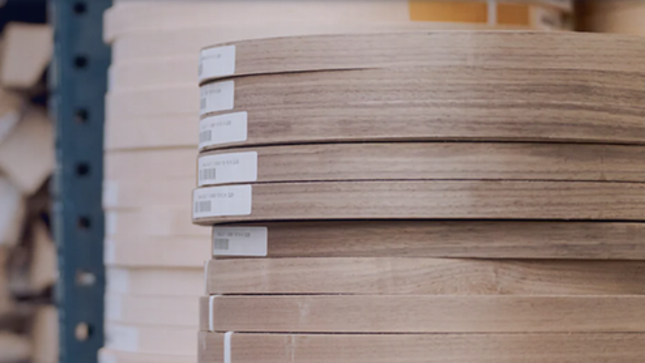
In the world of interior design, minimalist furniture has become a hallmark of modern aesthetics. Defined by clean lines, functional design, and a “less is more” philosophy, minimalism emphasizes simplicity and practicality. At the heart of this movement lies a seemingly small but impactful component—veneer edgebanding. This detail plays a pivotal role in ensuring the sleek, refined appearance that minimalist furniture demands.
What is Veneer Edgebanding?
Veneer edgebanding is a thin strip of natural wood veneer applied to the edges of plywood, MDF, or particleboard furniture panels. It covers raw edges, providing a finished look and enhancing durability while maintaining the authenticity of natural wood.
In minimalist furniture, veneer edgebanding elevates the design by offering a polished and cohesive finish, ensuring every edge aligns with the simplicity and elegance of the overall piece.
How Veneer Edgebanding Enhances Minimalist Design
1. Seamless Aesthetics
Minimalist furniture thrives on visual harmony. Exposed edges or mismatched finishes disrupt the flow of clean lines. Veneer edgebanding conceals raw edges, delivering a smooth and unified look. This seamless appearance ensures the focus remains on the furniture's structure and purpose.
2. Lightweight Functionality
Minimalist designs often rely on lightweight materials like MDF and plywood, which can sometimes reveal their raw, industrial origins. Veneer edgebanding allows designers to use these cost-effective materials while maintaining the elegance of natural wood, striking a balance between affordability and aesthetic appeal.
3. Customization in Woodgrain and Color
Minimalism doesn't equate to monotony. Veneer edge banding offers a range of woodgrain patterns and finishes—from light oak to dark walnut—enabling designers to personalize pieces while staying true to the minimalist ethos. Subtle woodgrain textures enhance furniture without overwhelming the simplicity of the design.
4. Durability for Long-Lasting Simplicity
Minimalist furniture is not only about looks but also about practicality. Veneer edgebanding protects edges from wear and tear, ensuring that minimalist pieces maintain their pristine appearance over time. This durability aligns with the minimalist value of creating timeless, enduring designs.
5. Eco-Friendly Options
Sustainability is often a cornerstone of minimalist living. Veneer edgebanding supports this value by using thin strips of wood veneer, which makes efficient use of natural resources. This eco-friendly approach complements the minimalist principle of reducing waste and embracing sustainable practices.
Applications in Minimalist Furniture
1. TabletopsVeneer-edged tabletops achieve the clean, sharp look central to minimalism, with edges that blend seamlessly into the surface.
2. Cabinets and ShelvesMinimalist storage solutions benefit from veneer edgebanding, which creates an uninterrupted, streamlined finish for cabinetry and shelving units.
3. Chairs and SofasThe subtle woodgrain on furniture legs or armrests, finished with veneer edgebanding, adds warmth and texture without cluttering the design.
Conclusion
Veneer edgebanding may be a small detail, but its impact on minimalist furniture design is significant. By ensuring smooth edges, enhancing durability, and offering a range of customization options, veneer edgebanding helps designers achieve the clean, functional, and timeless aesthetic that defines minimalism.
As the demand for minimalist furniture grows, veneer edgebanding will continue to play an essential role in blending practicality with beauty, proving that sometimes, the smallest details make the biggest difference.